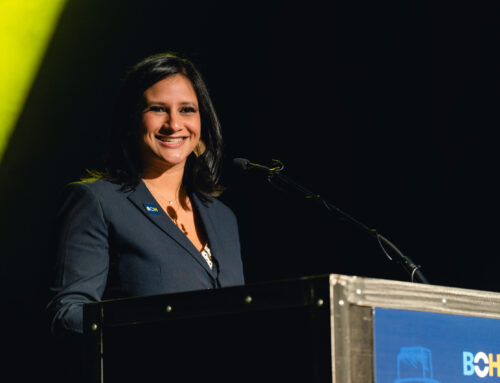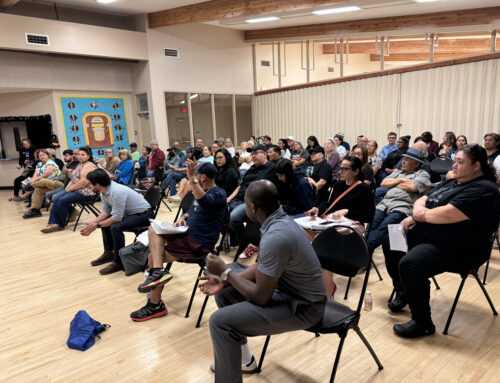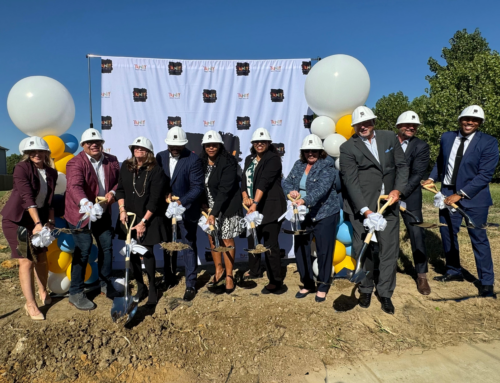Another West Dallas school shuffle will reopen Thomas Edison campus as West Dallas Junior High
Five years ago, West Dallas residents learned their neighborhood would become home to a new Dallas ISD magnet school model — a pre-kindergarten through eighth-grade science, technology, engineering and math (STEM) school. In addition to taxpayer funding, the school would benefit from millions of dollars and added support from a partnership between DISD, Toyota USA Foundation, and the SMU Simmons School of Education.
This would be the school for West Dallas seventh- and eighth-graders, who had been moved to the historic L.G. Pinkston High School when Dallas ISD closed Thomas Edison Junior High School. Instead of sharing the space with ninth- through 12th-graders, they would share it with elementary students.

West Dallas also lost a comprehensive elementary school when Amelia Earhart was consolidated with Eladio Martinez. The Earhart campus now is used by students from DISD’s Dallas Engineering and Science Academy (DESA), a magnet school for sixth- through eighth-graders, since moving from the historical Sequoyah Middle School campus, which was demolished to build the new Pinkston.
But at some point over the past year or two, the plans changed. DISD Trustee Joe Carreon says he and his fellow West Dallas trustee, Maxie Johnson, worked together to create a new plan that would respond to the West Dallas community’s true desires.
“In a very real way, one of the reasons I ran is because both in the West Dallas and in the Northwest Dallas community, parents were not being heard,” Carreon says.
An updated plan for West Dallas schools
In the new plan, DESA students will move to the old Pinkston high school, which now houses the West Dallas STEM School. The campus will host two distinct schools with aligned models, similar to the Yvonne Ewell Townview campus, Carreon says.
The Amelia Earhart campus will be demolished to make way for Dallas ISD’s Career Institute West.
And Thomas Edison Junior High, which housed Thomas Jefferson High School students while they waited for their new campus after a tornado destroyed the former one, and currently houses George Peabody Elementary students as their new campus in Oak Cliff is constructed, will not become the career institute, as originally planned, but instead become the junior high for West Dallas seventh- and eighth-graders. Students will begin attending classes there in fall 2024.
This is what West Dallas parents and community members want, Carreon says.
“The cry to me was, ‘We want to reclaim and restore our history,’” he says. “We didn’t want to be erased in the way we felt erased by so many other things happening in this zip code.”
West Dallas Junior High facility to honor Sequoyah and Thomas Edison
On a recent weeknight, a small group of West Dallas community leaders and Pinkston alumni gathered in “the old Pinkston,” as alumni tend to call it, to see the most recent renderings of the improvements to the Thomas Edison campus, which will be renamed West Dallas Junior High.
West Dallas Junior Community Meeting Renderings by Dallas Free Press on Scribd
The entrance of the campus will reflect the history of West Dallas middle schools with tributes to Sequoyah and Thomas Edison. Danny Berger and Rick Blan of PBK, the architecture firm with whom Dallas ISD is contracting to renovate the building, said the updated plans reflect community wishes from the initial meeting to “make sure we honor that history and bring back some of that history to West Dallas.”
PBK focused the historical tributes at the entrance because “we wanted it prominent — we didn’t want you to have to walk through the building to find it; we wanted to see it when you walked in,” Berger says.
“None of this is any real major change to the structure of the building,” Berger says, adding that renovations will begin in spring 2024 and be completed by fall 2025, with slides noting the “schedule [is] dependent on city permit approval.”
The $13 million Dallas ISD has committed to the renovation comes from unspent 2015 DISD bond funds allocated to the construction of the new L.G. Pinkston High School on Bickers, and to the renovations of the old Pinkston high school on Dennison to become the home of the West Dallas STEM School and the DESA magnet school.
The former Thomas Edison campus housed 1,000 students when Thomas Jefferson High School occupied the space, and currently hosts 400 students from George Peabody Elementary. The 330 seventh- and eighth-grade students in West Dallas will comprise fewer than both.
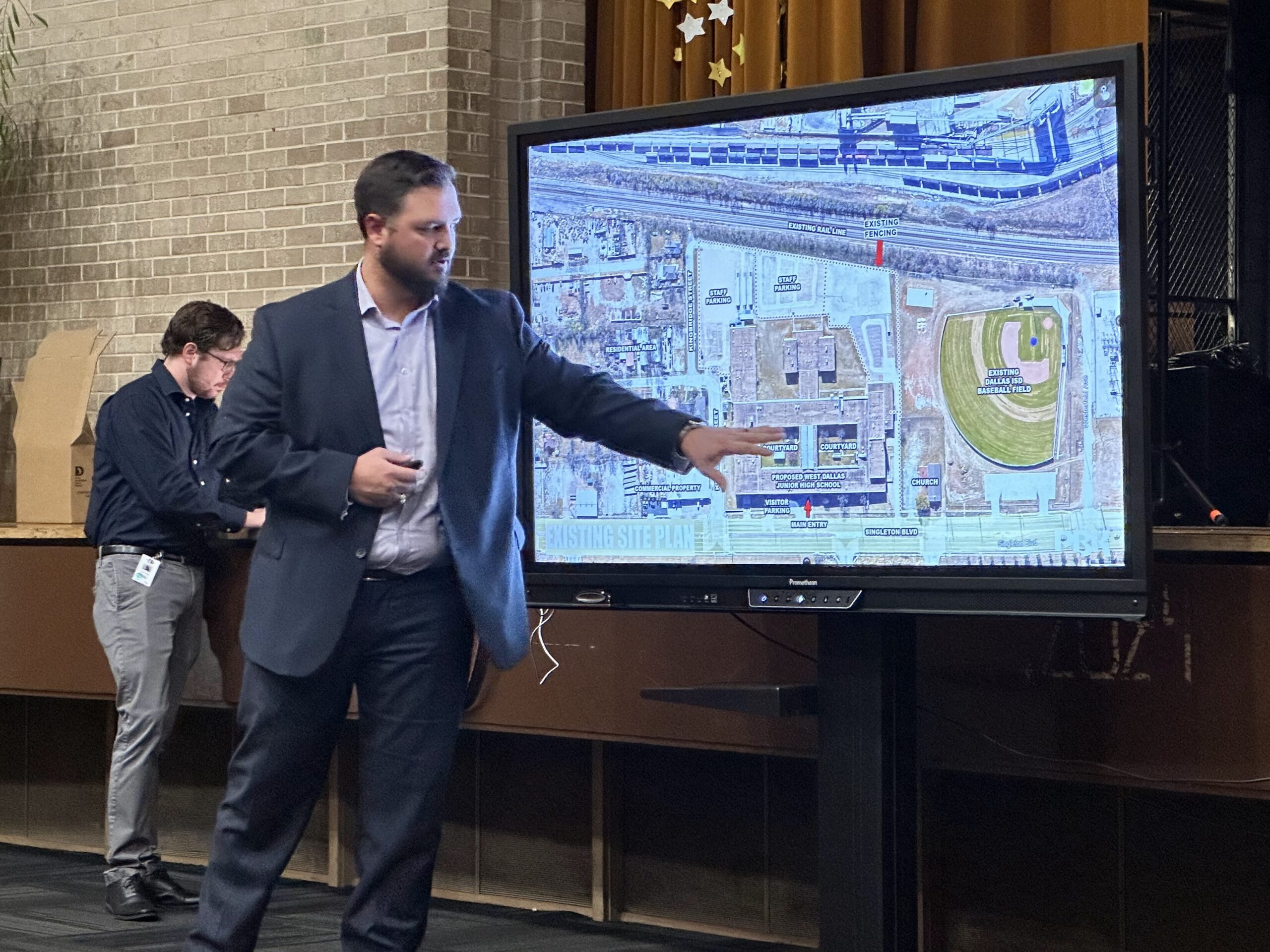
Then and now: Environmental safety concerns for West Dallas Junior High
Dallas ISD trustees voted to close Thomas Edison Junior High right after the Argos Southern Star concrete plant moved from its original location near Trinity Groves to a new location within 300 feet of Edison, thanks to a Dallas City Council vote approving a $2.5 million spend to help the Trinity Groves developers by helping Argos move.
“How can you build a wall where you block off the cement factory — hide that roller coaster behind that school?” asked Ronnie Mestas, longtime Los Altos resident and leader of Vecinos Unidos.
“We’ll look into the wall,” Blan quipped in response to Mestas’ facetious yet sincere request.
Many of the residents at the West Dallas Junior High meeting also had attended the EPA’s meeting about a new study looking at the contents of West Dallas’ soil, air and water. They wanted to know whether the study would include the junior high grounds.
“We will make sure all of our campuses — specifically this campus and Amelia Earhart that we’re making significant investment in — will be part of the testing,” Carreon promised. “We’ll make sure they will study our land.”
More concrete problems at West Dallas Junior High
The conversation took a turn when former Thomas Edison Junior High coach and teacher Rodney Allen brought up a change to the campus since Dallas ISD closed the school.
“I know we’re all academics,” Allen said, “but I didn’t hear anything about what happened to the practice fields that have been paved over for parking.”
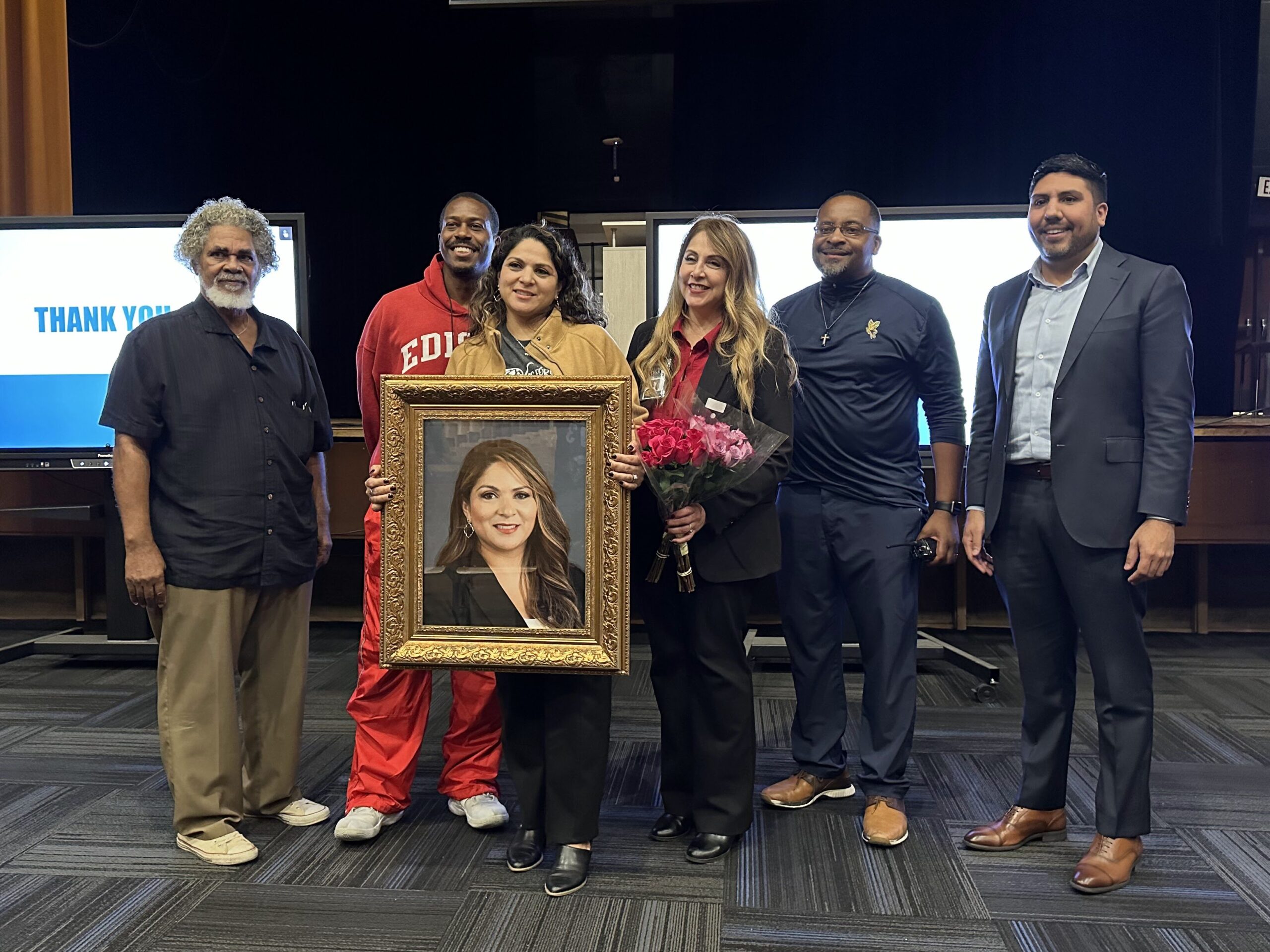
Most residents present didn’t know that Dallas ISD had paved over practice fields in 2019 to create parking when the building began being used for district administrative purposes.
“So it’s all cement back there to go with that cement plant I hate,” said West Dallas resident Debbie Solis, who is still frustrated with the 2015 City Council vote that moved Argos behind the school.
District officials explained that the plan is for West Dallas Junior High students to share a soccer field with the STEM school campus and a baseball field at the new Pinkston campus.
“But we still need sports and we need to pull that cement out of there,” Solis protested, pointing to other DISD middle schools that have sports facilities on campus, and arguing that an updated campus would attract more families. “We’ve been screwed the whole time, and even if we’re not going to grow, we deserve better. Our kids deserve better.”
Is community expertise valued by Dallas ISD?
“Are y’all taking into account what’s going across the street?” Mestas asked, referring to the new Trinity West redevelopment. “That’s all homes and homeowners with families.”
For the new Pinkston High School, “we advocated for a 1,500-bodied school,” said Pinkston alumnus George Castro, “and our previous trustee gave us a school for 1,000, and now it’s overcrowded.”
Those present noted that the “previous trustee,” referring to former Dallas ISD District 6 Trustee Lew Blackburn, also had advocated to close Thomas Edison. Solis remembers sitting in the same auditorium at that time, with a row of Dallas ISD consultants telling neighbors that Edison’s seventh- and eighth-graders would have to move to Raul Quintanilla Sr. Middle School in Oak Cliff.
West Dallas parents had been telling Solis, “No tengo carro” — they didn’t have transportation to get their kids all the way to Oak Cliff and back. She challenged the move to Quintanilla, asking why the district didn’t just move the Edison students upstairs to the empty second floor of Pinkston.
The entire row of Dallas ISD consultants hadn’t considered that option, she says, because they didn’t know the second floor was empty. This lack of local knowledge, and of making decisions without consulting community expertise and input, hasn’t been forgotten by neighbors.
Removing the cement and restoring the practice fields isn’t included in the $13 million budget of West Dallas Junior High renovations set to begin in the spring and be completed by fall 2025. But community members pressed district officials to find the funds to do right by neighborhood students.
“If you need us to speak,” Solis told them, “we all like to speak at meetings.”
Share This Story, Choose Your Platform!
Keri Mitchell has spent 20+ years as a community journalist, including 15 years dedicated to community and civic journalism at Dallas’ Advocate magazines. She launched Dallas Free Press in early 2020 with the belief that all neighborhoods deserve reporting and storytelling that values their community and holds leaders accountable.
Mitchell says she is energized by “knowing our work is making an impact — listening to people, telling their stories with strong narratives paired with compelling data that leads to change. I also love spending time in our neighborhoods and with our neighbors, learning from them and working to determine how journalism can be part of the solution to their challenges.”
Mitchell is proud to be the winner of multiple awards during her journalism career including: Finalist in Magazine Feature Reporting (2018) and Finalist in Magazine Investigative Reporting (2017) from Hugh Aynesworth Excellence in Journalism, Best Feature Story (2011) from Texas Community Newspaper Association and Best Magazine Feature (2011) from Dallas Bar Association Philbin Awards.
Areas of Expertise:
local government, education, civic issues, investigative and enterprise reporting
Location Expertise:
Dallas, Texas
Official Title:
Founder + executive director
Email Address:
keri@dallasfreepress.com

